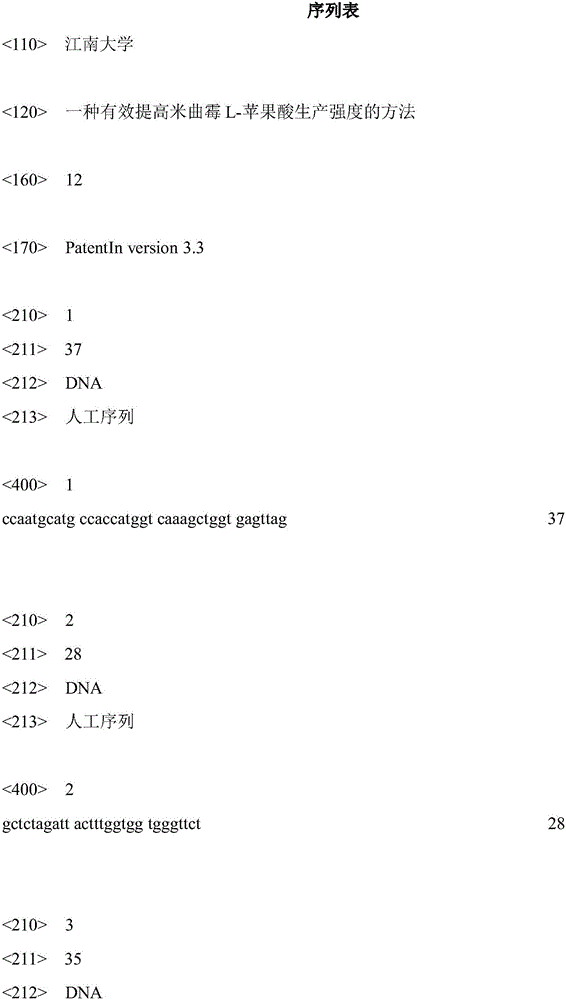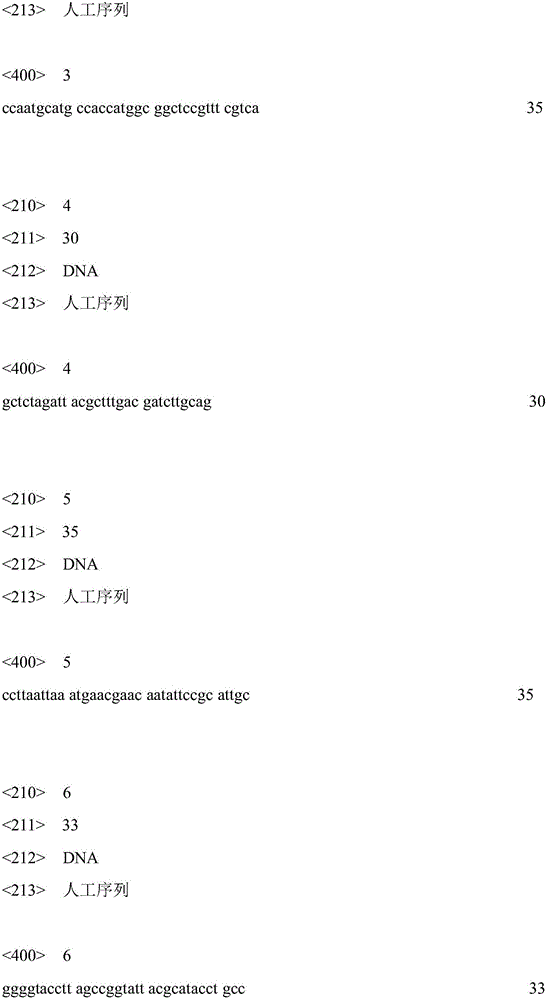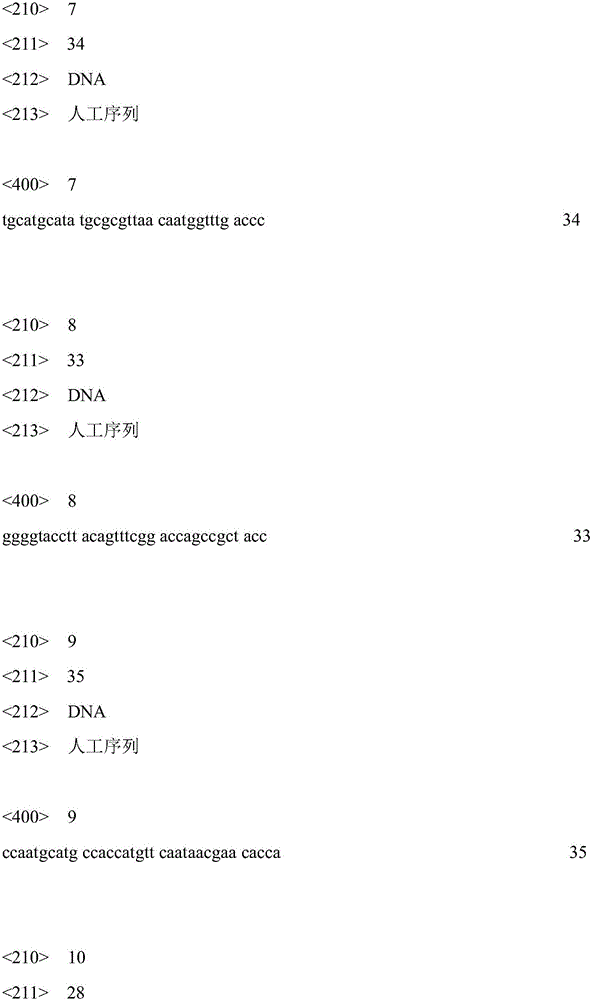Method for effectively improving L-malic acid production intensity of Aspergillus oryzae pp25
A technology of Aspergillus oryzae and malic acid, which is applied in the field of genetic engineering, can solve problems such as incapability of large-scale production and application, and achieve the effects of being convenient for wide application, improving consumption rate and reducing accumulation of intracellular products
- Summary
- Abstract
- Description
- Claims
- Application Information
AI Technical Summary
Problems solved by technology
Method used
Image
Examples
Embodiment 1
[0041] Embodiment 1 Aspergillus oryzae protoplast transforms and the screening of transformant
[0042] Aspergillus oryzae protoplast preparation and transformation method are as follows:
[0043] For the preparation method of protoplasts, refer to the literature Brown, S.
[0044] H., Bashkirova, L., Berka, R., Chandler, T., Doty, T., McCall, K., McCulloch, M., McFarland, S., Thompson, S., Yaver, D., Berry, A., 2013. Metabolic engineering of Aspergillus oryzae NRRL3488 for increased production of L-malic acid. Applied microbiology and biotechnology. 97, 8903-12.
[0045] For the protoplast transformation method, see the literature Blumhoff, M., Steiger, M.G., Marx, H., Mattanovich, D., Sauer, M., 2013. Six novel constitutive promoters for metabolic engineering of Aspergillus niger. Applied microbiology and biotechnology.97, 259-67.
[0046] The screened positive transformants were passed several times on the resistance plate to obtain a homozygous Aspergillus oryzae recombi...
Embodiment 2
[0047] The construction of embodiment 2 Aspergillus oryzae pp25
[0048] According to the upstream and downstream sequences of Aspergillus oryzae mdh and pyc genes published on NCBI, primers were designed to construct expression vectors of malate dehydrogenase mdh and pyruvate carboxylase pyc. At the same time, according to the upstream and downstream sequences of Escherichia coli pck and ppc published on NCBI, primers were designed to construct pck and ppc gene heterologous expression vectors.
[0049] Table 1 Primers for amplifying mdh and pyc genes
[0050] name
Sequence (5'-3')
serial number
mdh3-1
CCAATGCATGCCACCATGGTCAAAGCTGGTGAGTTAG
SEQ ID NO: 1
mdh3-2
GCTCTAGATTACTTTGGTGGTGGGTTCT
SEQ ID NO: 2
pyc-1
CCAATGCATGCCACCATGGCGGCTCCGTTTCGTCA
SEQ ID NO: 3
pyc-2
GCTCTAGATTACGCTTTGACGATCTTGCAG
SEQ ID NO: 4
ppc-1
CCTTAATTAAATGAACGAACAATATTCCGCATTGC
SEQ ID NO: 5
ppc-2
GGGGTACCTTAG...
Embodiment 3
[0055] Example 3 Overexpression of the four-carbon dicarboxylic acid transporter gene C4T318
[0056] Primers were designed according to the upstream and downstream sequences of Aspergillus oryzae C4T318 gene published on NCBI.
[0057] Table 2 Amplifies the primers of Aspergillus oryzae C4T318 gene
[0058] name
Sequence (5'-3')
serial number
C4T318-1
CCAATGCATGCCACCATGTTCAATAACGAACACCA
SEQ ID NO: 9
C4T318-2
GCTCTAGACTAATCAGATACATCCTCAT
SEQ ID NO: 10
[0059] Using the genome of Aspergillus oryzae as a template, related genes were amplified by PCR. The genome extraction method of Aspergillus is the method of Genome Extraction Kit of Tiangen Plant. Both the amplified target gene and the above vector plasmid pAg12 were double-digested with fast cutting enzymes Nsi I and Kpn I, and the target gene was ligated with the vector to obtain the expression plasmid pCAg22 of the C4T318 gene. Then use fast cutting enzyme AscI and Not...
PUM
 Login to View More
Login to View More Abstract
Description
Claims
Application Information
 Login to View More
Login to View More - R&D Engineer
- R&D Manager
- IP Professional
- Industry Leading Data Capabilities
- Powerful AI technology
- Patent DNA Extraction
Browse by: Latest US Patents, China's latest patents, Technical Efficacy Thesaurus, Application Domain, Technology Topic, Popular Technical Reports.
© 2024 PatSnap. All rights reserved.Legal|Privacy policy|Modern Slavery Act Transparency Statement|Sitemap|About US| Contact US: help@patsnap.com










